#beaux arts homes
Explore tagged Tumblr posts
Text


What do you think of the renovation of this 1892 home in Milwaukee, WI? I can't decide. It's like a combination of old/new and they did leave historic elements. 5bds, 4ba, asking $639K.

It's attractive, but if you're a purist, then you wouldn't like the wood painted white. Coffered ceiling is still here, so are the columns and arch, plus the fireplace. Looks like the original floor was sanded to make it lighter.

Original stairs, but they've been stripped and lightened.

Undeniably an attractive room, color wise.


Moving to the next sitting room, the color changes to greens. The crown molding is still intact. There's a window in the wall. Could this long room have been a sun room or porch?

Looks like a back porch/room was converted to a small office and mudroom.

Modernized guest powder room with wall niches.

Very nice dining room. Interesting architectural feature- the small area on the left. Wonder if that's original.

Beautiful archway to the kitchen.


Total kitchen revamp. There's a brick chimney. Like the counters and backsplash.

Don't particularly like the thing they made for the light fixture. Just hang the fixture, that frame isn't necessary, and it's off-center.

Whatever this is, is cute.

Going upstairs to the bedrooms.

Oh, here we go with the gray. This is the primary suite.

The en-suite bath is completely open.

Bedroom #2. The exposed brick looks like it was redone with new brick.

Completely redone bath. Nice tile.


Finished attic. boy, they hired a professional stager- look at the pillows in the baskets and the little seating area.

This is nice, a 2nd fl. terrace. The stager put up a shade.


The yard and garden are gorgeous.


The yard goes way back to the end of the .33 acre lot.

Gate and a long driveway.

The 2 car garage is around the block.

Beautiful Beaux Arts style home.
https://www.zillow.com/homedetails/2365-N-1st-St-Milwaukee-WI-53212/40455932_zpid/?
#beaux arts architecture#beaux arts homes#renovated homes#houses#house tours#home tour#old house dreams
126 notes
·
View notes
Text
When we have time because our classes are on work experience (long live the vocational lycée), we keep busy as best we can 😅

#This way I can keep some free time at home to continue my OS#On the other hand it's not practical to draw in class when your colleagues (or students) are staring at you#But when they come back to see you in class afterwards with their drawings to show you I find that so sweet 🥰#And I have a colleague who sometimes models at the beaux arts and is trying to get me to attend drawing classes in Paris 😅#I'm actually thinking of going there occasionally because working with naked bodies would be ultra enriching#But I'm not sure I'll be able to post that work on Tumblr (and I'd prefer this blog to stay more in the wizarding word vibe)
5 notes
·
View notes
Text

Architectural Elegance of the Kompothecras Mansion in Sarasota
This captivating image showcases the grandeur of the Kompothecras mansion in Sarasota, a stunning example of Beaux-Arts architecture inspired by William Vanderbilt’s Marble House. The mansion, valued at an estimated $12 million, stands as a beacon of luxury and design mastery, featuring a harmonious blend of historical elegance and modern amenities. The photo captures the essence of the mansion's opulent design, reflecting the rich cultural tapestry and legacy of the Kompothecras family in Sarasota's vibrant real estate landscape. Visit: https://www.omnihomeideas.com/design/celebrity-homes/gary-and-alex-kompothecras-house-in-sarasota/
#Kompothecras mansion#Sarasota#Beaux-Arts architecture#luxury home#Marble House inspiration#architectural brilliance#interior design#Gary Kompothecras#Alex Kompothecras#Siesta Key#Florida real estate#opulent mansion#cultural legacy#design mastery#Sarasota landmark
4 notes
·
View notes
Photo

Transitional Home Office - Home Office An illustration of a mid-sized transitional freestanding desk in a room with a dark wood floor, a brown floor, and gray walls.
#home office#architectural moulding#shagreen occasional table#abstract wall art#espresso hardwood flooring#beaux arts sconces#eames chair
1 note
·
View note
Text
I know I spent two days without posting any lesbian pride post lol but I swear I'm gonna post two posts per day in the following days to make up for it. I am again going to talk about an artist, but from a different period this time.
Rosa Bohneur !
(I love her name by the way... Bohneur means happiness in french and that's such a pretty name to have)
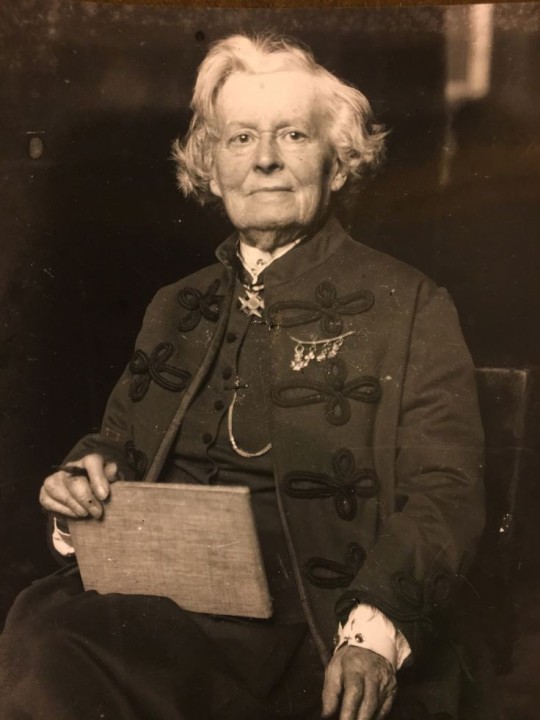
Marie-Rosalie Bonheur, known as Rosa Bonheur, was born in 1822 in Bordeaux and died in 1899 in Thomery. She was a French painter and sculptor specialising in representations of animals.
She has kind of an interesting family story (mother adopted by a rich guy who found out later who was her real father, siblings all artists, father who met a lot of interesting people, links with many famous people...) but it would be too long to talk about it and I want to focus on Rosa herself. Do check it up if you're interested!
During her youth, Rosa Bonheur had a reputation for being a tomboy, a reputation that followed her throughout her life and which she made no attempt to deny, wearing her hair short and later smoking cigarettes and cigars. Her emancipated lifestyle never caused a scandal, even though she lived in an era that was very concerned with convention. Like all women of her time, Rosa Bonheur had to apply to the Prefecture of Paris for a cross-dressing permit, renewable every six months, in order to wear trousers, in particular to attend livestock fairs, travel or ride horses.
Here's one of her permits, from 1857 :
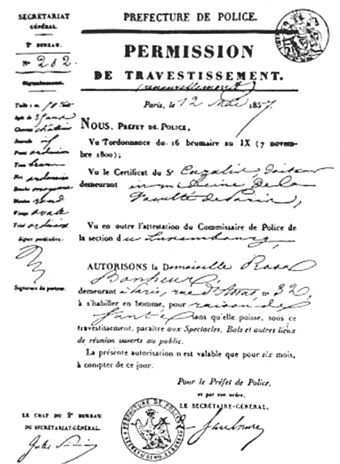
And though many historians tried to deny the fact that she was a lesbian, she always refused to marry a man, has only ever had relationships with women and literally wrote that she never felt any sort of love, attraction or tenderness for men, "besides a frank and good friendship for those who had all my esteem". After the death of the woman she loved, she also wrote "If I'd been a man, I'd have married her, and they wouldn't have made up all those silly stories..." You got it : even if she didn't shout it from the rooftops, Rosa was very probaby a homosexual woman.
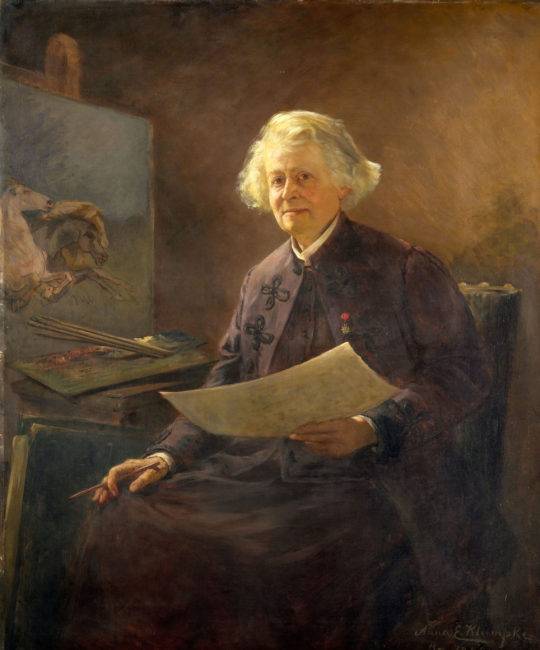
Rosa Bohneur grew up in a fairly wealthy family, thanks to the financial support of her mother's adoptive father. But when her mother's father died, the family was left without any such support, and fell into dire poverty. When Rosa was 11, her mother died, which deeply traumatised her. She kept a lifelong admiration for her mother.
In 1836, at the age of 14, she met Nathalie Micas, who became her lover. Only Nathalie's death 53 years later separated them.
Her father remarried in 1842 to Marguerite Peyrol, with whom he had a last son, Germain, who would also become a painter. Rosa Bonheur did not get on well with her stepmother and when her father died in 1849, she left the family home to live with the Micas.
After her mother's death, Rosa Bonheur went to primary schools, was apprenticed as a dressmaker and then went to boarding school. Eventually her father took her into his workshop, where her artistic talents were revealed. He was her one and only teacher. Gradually, she developed a passion for animal art, which became her speciality.
She exhibited for the first time, at the age of 19, at the Salon of 1841. She won a 3rd class medal at the Salon of 1845, and a 1st class medal (gold) at the Salon of 1848. This award enabled her, at the age of 26, to obtain a commission from the State to produce an agrarian painting (paid 3,000 francs). The painting resulting from this state commission, "Labourage nivernais" was supposed to go to the Musée des Beaux-Arts in Lyon. But it was so successful at the 1849 Salon that the Beaux-Arts department decided to keep it in Paris, at the Musée du Luxembourg. After Rosa Bonheur's death, the work went to the Louvre, before being transferred to the Musée d'Orsay in 1986.

When her father died in March 1849, Rosa Bonheur replaced him as director of the École impériale gratuite de dessin pour demoiselles (or École gratuite de dessin pour jeunes filles). She remained in this position until 1860: ‘Follow my advice and I'll turn you into Leonardo da Vinci in skirts’, she often told her pupils.
In 1860, she moved to a huge house in By, where she had a huge workshop built, and ample space for her animals. One of her relatives wrote: “She had a complete menagerie in her house: a lion and a lioness, a deer, a wild sheep, a gazelle, horses, etc. One of her pets was a young lion she let run around. My mind was freer when this leonine animal died".
In June 1864, Rosa was visited by Empress Eugenie, who invited her to lunch at the Château de Fontainebleau with her husband. The following year, Eugenie returned to see her, to present her with the Legion d'honneur herself. Rosa is the ninth woman and the first artist to receive this distinction. About this, The Empress said :
“At last, you've been knighted. I am delighted to be the godmother of the first woman artist to receive this high distinction. I wanted the last act of my regency to be devoted to showing that, in my eyes, genius has no sex."
She was also the first woman to be made an officer in this order, in April 1894 (first female officer of the Legion d'honneur).
Rosa traveled extensively with her lover Nathalie, herself a painter and mechanical enthusiast (she invented and patented a railway braking system), and painted many pictures inspired by her travels.
In 1889, Nathalie died after some 50 years together. It was then that Rosa expressed her regret at not having been able to marry her.
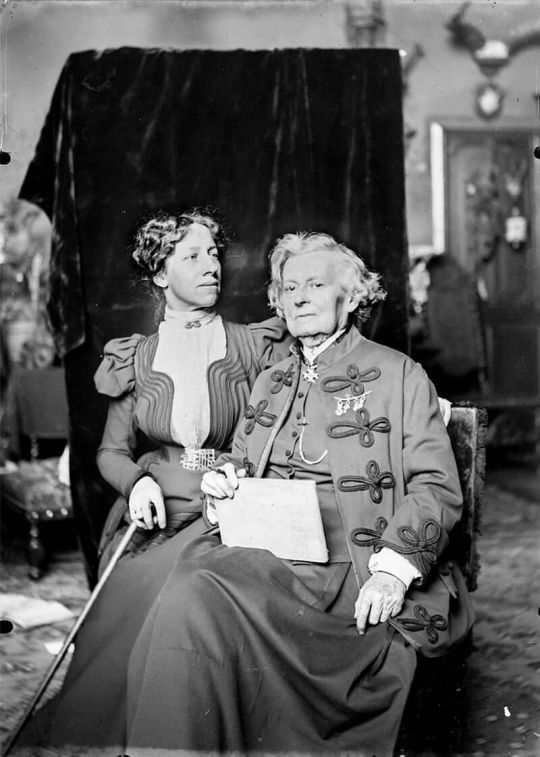
After Nathalie's death, Rosa met Anna Klumpe, a talented American painter. The two women moved in together some time later.
Rosa Bohneur died of pulmonary congestion in 1899, without having completed her last painting, “La foulaison du blé en Camargue”, a monumental canvas she had planned to exhibit at the 1900 Universal Exhibition.
She is buried in Père Lachaise cemetery, alongside Nathalie, her parents and Anna (who died years after her). She left her entire fortune to Anna, who, in 1908, published a biography of Rosa Bonheur and created a Rosa-Bonheur prize at the Société des artistes français. The Société des Artistes français posthumously awarded her the Medal of Honor shortly after her death.
Rosa could have had military honors at her funeral, but she specified in her will that she did not wish this.
There's a lot of interesting things to say about Rosa, her art and her history, so I suggest you do some research on her! She was a very talented and strong-willed woman who had a huge impact on French art and left a considerable cultural legacy.
Here are some of her paintings :

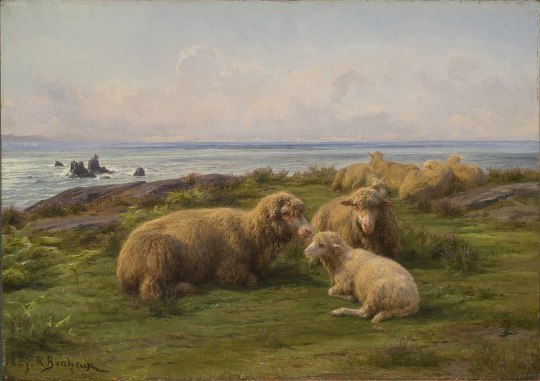


I personally love them ! I am not a painting expert, I just find them sooo pretty.
See you tomorrow :)
#lesbian#lesbian pride#pride#pride month#female homosexual#female homosexuality#rosa bonheur#french art#painting#art#lesbian history
224 notes
·
View notes
Text
no year in review because it was all horrible really so instead i'm gonna take this chance to share a pile of incredible soc fics because they gave me somewhere else to be
these are all amazing stories and they made me feel a variety of things, and i've been compelled to return to all of them more than once. there are honestly more but this was getting very long. all fic authors thank you so much for putting such beautiful things out into the world ✨
To Everything There Is A Season by @basicbard, @ace-kaz-brekker
When times on the farm get tough, Jesper decides to make use of the old temple in the woods. Almost coincidentally, he meets a strange boy in the same woods shortly after. Are his prayers truly being answered? And why does the stranger seem to know so much?
Incredibly incredibly lovely little mythical fic that i am so enchanted by, this is a type of story that i'm always looking for and when someone who shares your interest happens to create it that is a gift from god, frankly
out of the forest (into a home) by stillthestars
Wylan is adrift in the city; Jesper and the rest of the Crows take him in. Daemon AU.
I have read this fic so many times, every couple of months at least, and the comments are turned off so i can never tell the author how much I love what they've created and i literally lie awake at night haunted by this (i do mean literally).
A Shot in the Dark by alex_kade
The Crows are on a treasure hunt, but when Wylan gets seriously injured the mission becomes one of saving their friend. OR yet another fic where Wylan is the bravest of brave little toasters.
The first in my love affair with fics where Wylan gets shot lol. "bravest of brave little toasters" lives in my head rent free always.
A Measure of the Sum of Parts by @kindness-ricochets
Wylan is trying to improve Kerch and Jesper is trying to be happy with his life. After an accident he heads for the Little Palace to learn how to control his abilities, and Wylan uncovers yet another dark family secret. Reunions in Ravka, political machinations, and the beauty of a strange little family.
The other fic i am biologically compelled to reread every couple of months. So so many fics by this author touch me, but this one is seriously everything to me.
Musée des Beaux Arts by @oneofthewednesdays
Six portraits of life and death in Ketterdam featuring the interwoven stories of Wylan Van Eck and Kaz Brekker.
One of the best fics i've ever read in any fandom, an utterly perfect character analysis fic about the Wylan/Kaz parallels
the handmaid by MaudeAlise
It’s a relatively straightforward job: Jesper will pretend to be the handmaid to the withdrawn and sheltered Van Eck heir, and convince him to elope with another mercher. That’s all Jesper has to do on his end, and then the Crows will walk away with 45 million kruge. It’s a simple task. Or it would be, if not for the fact that there seems to be more to Wylan Van Eck than meets the eye, and Jesper can’t help but be intrigued—and maybe a bit charmed, too.
Me reading this fic channeling whatever energy those instagram romantasy readers possess, like ok i get the feeling you guys are trying to express i really get it now. what on earth could be better than Jesper employed to be Wylan's handmaid. maybe nothing? SO compelling
under a merciless white light by @feelinglikecleopatra
Jesper decides to grow out his hair.
one of the most moving fics i've ever read ever, idek how to express it
Love is War (And War is Hell) by @silverbirching
Jesper and Wylan face their biggest challenge as a couple to date: dealing with a houseguest. (and that houseguest has done war crimes)
WIP. Nothing could've prepared me for how completely smitten I would be with the concept of Jesper and Wylan taking care of a wounded Ivan. Like i'm head over heels for this fic, its hilarious and sweet and emotional, it is just way too delightful, i can't handle it
Flight of the Butterfly / Symbiosis by @jazzythursday
travel time between Shu Han and Ravka. Jesper wanders onto the deck of the Hummingbird at night, restless and looking for… something, and finds Wylan instead. Conversations about sensitive topics ensue, and even Crows need sleep.
my fav missing scene fic inspired by SAB!!!! I was DESPERATE for more time on that ship and this fic gave me everything i wanted. the characterisation in this fic is flawless
If you hold me without hurting me, you'll be the first who ever did by gglow
Jesper and Wylan's first times at the Van Eck mansion, because we all need closure.
i can't get enough of fics set immediately after CK exploring how Wylan and Jesper settle into the mansion, this might be my favourite one i've read, its just so tender
somewhere full of bright colours and beautiful sounds by @jackwolfes
A Marya Hendriks Van Eck character study, aka Marya adjusts to life back in Ketterdam.
So many fics by this author, but i think about this fic all of the time. Its the fic i've always wanted and its everything i could've hoped for.
We're Gonna Need a Bigger Pentagram by @emmy-everafter
Nina Zenik is a vet med student who's almost done with her clinical rotations… but she's also secretly a very powerful witch. When someone brings a cursed, injured werewolf into the animal hospital, Nina decides to try to save his life, despite the bitter hatred that exists between wolves and witches. She enlists the help of her housemates, Jesper (who's also a witch), Inej (who's fae), and Kaz (who may or may not be a vampire). But breaking this curse requires more than Nina bargained for, and time is running out. Can the Crows save the werewolf before it's too late? More importantly, can they do it under the nose of their all-too-human housemate, Wylan? And--perhaps the most important question of all--will Nina finally get some decent waffles?
PURE joy, just made me so happy??? extremely delightful, fun, also super touching. Just so so so rich. One of my fav AUs, making all the crows a different creature and then putting them in a house together, A+.
To Live in Color by @sixofcrowdaydreams
As a child Wylan Van Eck was told by his father that domestic labor is all he will ever accomplish since he cannot read. He’s grown up cleaning his own family’s home. It’s not easy work, but it’s gotten easier over the years. If only he wasn’t so lonely. But now that his father has remarried and a has a new heir on the way, Wylan has the suspicion that he won’t be kept around much longer, even to clean. So for once in Wylan’s life, he decides to live for himself. Just this once. He’ll attend the King’s Masquerade Ball whether his father wants him there or not. However, his plan the night of the masquerade goes sideways when he meets a handsome sharpshooter and the criminal crew he runs with carrying out a heist at the palace. Wesper Cinderella AU
one of those perfect storm fics where not only is the writing wonderful, the characterisation on point, but the story itself is just SO engrossing. this was heartbreaking and uplifting
The In-Between by @sparrowmoth
Born into a world where a highly stigmatized and exploited series of genetic mutations can completely strip you of your humanity, Wylan has known since childhood that something was different about him. The same something different that is said to have killed his mother. Now, abandoned by his father, and his world shrunk to a cage, he must decide if to accept his fate or risk everything to change it.
WIP. The.... worldbuilding..... magnifique. this fic has me exclaiming GOD at least once a chapter lol. I haven't read many hybrid fics in my time but i fear i am now spoiled and no one can live up to this
Crows of the Saintly Days by Allthebestpeopleare
A very chaotic Inej, Nina and Jesper go to Ketterdam University. Things start to get interesting when Nina catches the eye of a cute jock in psych class, a very shy and sweet Wylan stumbles into their friend group, and a past associate of Inej's makes more and more appearances.
Prob the longest fic i've ever read, but genuinely would not sacrifice a single word. Weaves textfic and prose, and altho imo textfic can be kinda vapid/ooc what starts out as v light fun spirals into a wonderfully well developed story that really deeply moved me, and i loved the style!
Blood in the Water by hopeisbloody
Kaz Brekker runs the Barrel, his Wraith, and his Sharpshooter at either side for eternity. Jesper Fahey, ten years into his immortality, still a fledgling at heart, feels lost, alone, empty. Kaz and Inej have each other, and they have had each other for centuries. Even in their inner circle, he’s excluded from the millennia of memories they share. Their rule is disrupted. Bodies appear, drowned, drained of blood. Wylan is back, but what for?
This is one of the coolest Wylan characterisations i've ever read, such an incredibly engrossing story, I literally could not stop reading
We Keep This Dream Together by @magicandpizza
An entirely self-indulgent, vaguely chaotic, mostly sweet Six of Crows coffee shop/university AU, based (largely) on my experiences of the UK university system. Mostly focused on Wesper, but with sides of Helnik and Kanej too.
The most comfort fic ever, its not technically a Christmas fic (altho it does appear in a chapter) but feels like a Christmas fic to me because it makes me feel a sense of warmth and comfort that time of year embodies
a path to normal by seimaisin
Home is a difficult concept for Wylan and his mother. Jesper makes it easier.
so delicate and lovely, another fic set in the direct aftermath of CK focused on Marya returning home, which i can never get enough of <3333
In a Full Life, All Hearts Break a Little by alcove_words
Two years after the end of Crooked Kingdom, Jesper finally visits Novyi Zem and the father and life he left behind. But he isn't alone; Wylan comes, as well, determined to be supportive. Neither of them expects it to be an easy trip, but Novyi Zem holds more for both of them than they are prepared for.
Selling my soul for all fics set in Novyi Zem, but this one...... so SO beautiful. So conversation-based but full of story, so BIG hearted, such unbelievably beautiful writing.
Of Bronze and Blaze by amagicbeyond
This is a Wesper-centric reimagining of Six of Crows and Crooked Kingdom, through the lens of the Shadow and Bones TV canon.
WIP. Oh my god????? Oh... my god. I don't even have words for this one, its just unbelievable
#i still need to comment on a lot of these#due to the aforementioned bad times and not functioning and what not#but i will be commenting on them and also many others that are waiting for me#wesper authors that are inexplicably following me you are all AMAZING#i love you#tp#fic
61 notes
·
View notes
Text
sparing the sob story, I have been very very unwell.
But today I went to the musée des beaux-arts downtown and woke up my spirit a bit. When we got home, I pulled my markers out, broke open a brand new sketchbook, and got my hands dirty for the first time in many many many weeks.

Idk.
It’s always a sign of good things when my desk looks this way, and it’s nice to feel some hope.
(´ω`)
That’s all. ❤️ just wanted to share. Thanks for listening
57 notes
·
View notes
Text
"For more than a decade, the French city of Lille’s Palais des Beaux-Arts — which was inaugurated in 1892 and is home to France’s second largest collection behind only the Louvre — has deployed a kind of “museo-therapy” that uses the museum space and the treasures held within it to help treat patients from local hospitals.
But in September 2023, this initiative became a little more formal when it signed an agreement with the University Hospital Center of Lille (CHU) to offer 140 museum art therapy sessions over a year to patients who have been given a “museum prescription” by doctors, making it one of the most significant programs of its kind in the world.
The idea of a museum prescription, which fits under an umbrella of out-of-hospital, nonclinical treatment known as social prescribing, is that exposure to art and culture or history can complement, accelerate or potentially even displace some forms of medical care in traditional settings — in an effective, enjoyable and low-cost manner.
Further afield, the Montreal Museum of Fine Arts has worked with the Francophone Doctors of Canada association since 2018 to offer a form of museum prescriptions, albeit without Lille’s art therapy aspect. In Brussels, Belgium, doctors in one of the city’s largest hospitals have been prescribing museum visits to patients suffering from depression, stress and anxiety since 2022 — and this year that expanded to 18 “medical structures” and 13 museums in the city. Singapore has run an Arts for Healing Program connecting patients with offerings at local music schools and community gardens since 2021. The newly formed advocacy group Social Prescribing USA aims to make social prescribing available to every American by 2035, building on projects already running in Massachusetts and New Jersey."
55 notes
·
View notes
Text
THIS DAY IN GAY HISTORY
based on: The White Crane Institute's 'Gay Wisdom', Gay Birthdays, Gay For Today, Famous GLBT, glbt-Gay Encylopedia, Today in Gay History, Wikipedia, and more … January 19



1851 – The "State of Deseret," better known as Utah, enacts a criminal code that makes sodomy illegal only between males, and sets the penalty at a prison term and/or fine in the discretion of the court.


1863 – Ogden Codman, Jr. was an American architect and interior decorator in the Beaux-Arts styles, and co-author with Edith Wharton of The Decoration of Houses (1897).
Codman spent his youth from 1875 to 1884 at Dinard, an American resort colony in France, and on returning to America in 1884, studied at the MIT. Wharton became one of his first Newport clients for her home there, Land's End. Subsequently she introduced Codman to Cornelius Vanderbilt II, who hired him to design the second and third floor rooms of his Newport summer home, The Breakers.
In 1907, Codman built the Codman-Davis House in Washington, D.C. for his cousin Martha Codman, one of the few intact homes that he designed. This included a carriage house, now the Apex Night Club, ironically a gay club.
Although a noted homosexual, on 8 October, 1904, Codman married one of his commissioners, Leila Griswold Webb, widow of railroad magnate H. Walter Webb, who died unexpectedly in 1910.
In 1920, Codman left New York to return to France, where he spent the rest of his life at the Château de Grégy, wintering at Villa Leopolda in Villefranche-sur-Mer: it is his masterpiece, the fullest surviving expression of his esthetic.


1887 – Newspapers report an apparent blackmail ring in Greenville, Ohio that leads to seven indictments and one conviction for sodomy, but the Governor of Ohio pardons the one convicted.

1897 – The Missouri Supreme Court upholds a conviction for assault to commit sodomy of a St. Louis police officer who attempted sodomy with another male after threatening to arrest him unless he accompanied him to a lumber yard, where the attempt was made.


1921 – Acclaimed mystery writer Patricia Highsmith (d.1995) was the author of one explicitly lesbian novel, as well as the popular series featuring the amoral bisexual Tom Ripley.
Highsmith was born in Fort Worth, Texas, on January 19, 1921. Her father was of German and her mother of British descent. She was educated at Barnard College, New York, and became a freelance writer a year after she left college. She lived alternately in Europe and the United States, residing mostly in Switzerland.
Her first novel Strangers on a Train (1949), later a film directed by Alfred Hitchcock, depicts that pattern of peculiar psychological imprisonment between two people that she was to continue as her personal motif. Instead of an absolutely moral Holmes/Watson type of reassurance at the center of the novel, there is the subversive, explicitly homoerotic and tortured obsession of two murderers for each other.
Carol, first published in 1952 as The Price of Salt, under the pseudonym Claire Morgan, is Highsmith's only explicitly lesbian novel. It sold nearly one million copies in the United States in 1953 alone. Lesbian readers' response was one of gratitude—finally they were offered a novel that did not end in death, despair, or debasement.
Of the Ripley series, critic Kathleen Gregory Klein argues that Highsmith has gone as far as creating a new fictional form, citing her introduction of the cult-figure serial killer Tom Ripley as a new type of criminal superhero, prefiguring similar cultural icons that appeared in the 1990s. (The Talented Mr. Ripley was awarded the Edgar Allan Poe Scroll by the Mystery Writers of America in 1955.)
The Ripley books are generically akin to a series. Characters reappear in subsequent titles and undergo development, and Ripley himself inspires readerly identification, at least because he is so amorally fascinating.
René Clément's subtly homoerotic Purple Noon (1960), starring Alain Delon as Tom Ripley, was the first adaptation of The Talented Mr. Ripley.
Other adaptations of the Ripley novels include Wim Winders' The American Friend (1977), featuring Dennis Hopper as Tom Ripley in an existential take on the character; Anthony Minghella's The Talented Mr. Ripley (1999), starring Matt Damon; Liliani Cavani's Ripley's Game (2002), featuring John Malkovich; and Roger Spottiswoode's Ripley Under Ground (2005), with Barry Pepper in the title role.
According to her biography, Beautiful Shadow, Highsmith's personal life was a troubled one; she was an alcoholic who never had a relationship that lasted for more than a few years, and she was seen by some of her contemporaries and acquaintances as misanthropic and cruel.
Highsmith had relationships with women and men, but never married or had children. In 1943, she had an affair with the artist Allela Cornell (who committed suicide in 1946 by drinking nitric acid[9]) and in 1949, she became close to novelist Marc Brandel. Between 1959 and 1961 she had a relationship with Marijane Meaker, who wrote under the pseudonyms of Vin Packer and Ann Aldrich, but later wrote young adult fiction with the name M.E. Kerr.


Ray Stevens & Pat Paterson (R)
1941 – Born: Pierre Clermont, better known by his ring name Pat Patterson, was a Canadian former professional wrestler (d.2020). Pat was 17 when he started wrestling. He soon became one of the biggest names in the sixties and seventies. He worked for WWE as a creative consultant. He was inducted into the WWE Hall of Fame in 1996.
Outside of the wrestling ring, Pat was really timid and shy. He was soft-spoken, with a cute French accent. Surprisingly, Pat was a former altar boy and candidate for the priesthood. He was a deeply religious man.
Pat Patterson debuted in Montreal, Quebec in 1958 as "Pretty Boy" Pat Patterson, an effeminate wrestler who wore red lipstick and pink trunks and was accompanied by his pet Poodle.

A Young Pat Patterson
Patterson wrestled frequently for affiliates of the National Wrestling Alliance throughout the 1960s, and was a ten time tag team champion in San Francisco with a variety of partners. His most famous pairing was with Ray Stevens, the two of them forming the heel tag team, the Blond Bombers.
Patterson was openly gay, although he had never stated so. It is rumored that Pat and Gerald Brisco, another of his wrestling partners, were lovers. In 1992, Patterson was accused of sexual harassment by former ring announcer Murray Hodgson and released from the company until the charges were dropped, when he was promptly rehired. After dropping the charges, Hodgson's attorney referred to Hodgson as "a lifelong con man."
In August 2006, Patterson underwent emergency heart surgery. In October, Patterson recovered from his operation and was released from the hospital.
On June 12, 2014, Patterson officially "came out" on TV. The video link is below:
youtube
(Click to view on YouTube)
Although Patterson was openly gay, having come out in the 1970s, his sexual orientation was never directly acknowledged on television until 2014 when he spoke about it on a WWE-produced reality TV show.
Louie Dondero, Patterson's longtime partner of 40 years, died of a heart attack in 1998. Patterson himself died in December 2020.


1943 – The name Janis Joplin (d.1970) is practically synonymous with the excesses epitomized by the counterculture of the 1960s: sex, drugs, and rock 'n' roll, all of which Joplin took to extreme levels. As troubled as she was talented, Joplin has been portrayed in numerous articles, full-length biographies, and documentaries as everything from a reckless, sex-crazed party animal to a victimized, lost little girl who never believed she was lovable.
Joplin was born in small, insular Port Arthur, Texas, where she grew up. She always stood out as a bright, creative misfit in her oil-refinery hometown. Joplin reportedly relished the attention that her bad-girl image brought, but her status as a social outcast hurt her deeply and would remain with her throughout her short life. She decided that school was not for her and began singing at the hootenannies of the day and at bars in Austin, San Francisco, and Venice, California. After some time spent traveling, Joplin moved to San Francisco and fully immersed herself in the counterculture there.
Before long, she joined the then-unknown group Big Brother and the Holding Company. Joplin scored a major hit at the 1967 Monterey Pop Festival with her smoldering rendition of Big Mama Thornton's blues song "Ball and Chain." That major "Summer of Love" event heralded her big breakthrough; Big Brother signed a contract with Mainstream Records, and Joplin continued to perform with them for two more years. Joplin later formed the Kozmic Blues Band, and in 1969 released I Got Dem Kozmic Blues Again Mama! When the group fell apart, she spearheaded one last project, the Full Tilt Boogie Band, a more popular-style, professional-sounding group with whom she recorded her third album, Pearl. The widely acclaimed record was released posthumously and featured her unforgettable version of the Kris Kristofferson tune "Me and Bobby McGee."
As her fame grew, so did her alcoholism and drug use; she battled her heroin addiction but never relinquished her Southern Comfort habit. Joplin's sexuality was expansive and open, encompassing both men and women; but the "freak" circles in which Joplin circulated were generally heterosexual and not immune to sexism. Hippie women, after all, were not supposed to be crass and, as Janis was often described, "ballsy."
In addition, Joplin crossed the race line. Most people had never seen a white woman singing the blues and letting it all hang out the way she did, and perhaps not everyone was ready for her full-on explosion of voice and soul. Citing influences and inspirations such as Billie Holiday, Bessie Smith, and Leadbelly, Janis interpreted the blues in a way that helped break down the old barrier of "black music" versus "white music."
Although Joplin took numerous female lovers, she never openly identified as lesbian or bisexual. Instead, she considered herself beyond categorization: she was simply sexual. Her friends mainly referred to her as bisexual, yet the press has long loved to heterosexualize her past, while lesbian culture often claims her as one of its own. The truth is that Janis maintained long-term relationships with several women, including Peggy Caserta, whose controversial 1973 memoir Going Down with Janis documented their affair and mutual drug addiction.
At the same time, Joplin was also on the lookout for "one good man" with whom to settle down. Twice engaged, she never did marry.
Although she had kicked heroin around the time she formed the Full Tilt Boogie Band, Joplin was tempted again one night when she ran into her former dealer in the lobby of the Landmark Motel in Los Angeles. She died of a heroin overdose, alone in her room at the motel, on October 4, 1970.
Joplin's music continues to flourish. Her Greatest Hits album still makes the Billboard charts. She was inducted into the Rock and Roll Hall of Fame in 1995.


The Johns Committee in session
1959 – On this date investigators summoned the University of Florida Geography professor Sigmund Diettrich to the Manor Motel in Gainesville, Florida for "interviewing". Soon after, he was fired from his job and lost the life he loved as a beloved teacher and dean. He attempted suicide the same day he was let go from U.F. Hundreds of other professors and students across the state were also terminated or expelled because of their sexuality. Many people are familiar with the McCarthy hearings but do not realize that Florida had its own committee designed to weed out communism and homosexual activity. State Senator Charley Johns started the investigations to "protect Florida's children."
The Johns Committee pursued people in academic institutions, courthouse bathrooms and bus stations. The committee's investigators went so far as tapping phones in motels, interrogating children as young as 10, and breaking up a teenage girl's slumber party looking for evidence of moral misconduct. In 1993 more than 30,000 pages of secret documents became public, including a University of Florida administrator's statement that there was no way to prevent Gay men from lingering in university bathrooms "unless you pour sulfuric acid on the floor to make people go fast."


1982 – Pete Buttigieg is an American politician and candidate for the Democratic nomination in the 2020 United States presidential election. He is the first openly gay person to seek the Democratic nomination, and has built his campaign around the idea of generational change. He launched his campaign on April 14, 2019, after forming an exploratory committee in January. Initially considered a long shot, he gained significant momentum in mid-2019 when he participated in several town halls, forums, and debates. As of December 2019, several media outlets consider him one of four "top-tier candidates".
Buttigieg served as the 32nd mayor of South Bend, Indiana from January 2012 to January 2020. Before running for office, he worked on the political campaigns of Democrats Jill Long Thompson, Joe Donnelly, and John Kerry. He was defeated in the 2010 election for Indiana State Treasurer before being elected mayor of South Bend, Indiana the following year, becoming the youngest mayor of a city with a population of over 100,000. In 2015, Buttigieg publicly came out as gay. Later that year, he was reelected with over 80% of the vote. In 2017, he ran for chair of the Democratic National Committee.
From 2009 to 2017, he served as a naval intelligence officer in the United States Navy Reserve, attaining the rank of lieutenant. In 2014, he was deployed to Afghanistan for seven months and was awarded the Joint Service Commendation Medal and the Joint Meritorious Unit Award. From 2007 to 2010, he worked as a consultant at management consulting firm McKinsey & Company. Buttigieg is a graduate of Harvard College and Oxford University. He attended the latter on a Rhodes Scholarship.
In a June 2015 piece in the South Bend Tribune, Buttigieg came out as gay. By coming out, Buttigieg became Indiana's first openly gay elected executive. He was the first elected official in Indiana to come out while in office, and the highest elected official in Indiana to come out. Buttigieg is also the first openly gay Democratic presidential candidate, and the second overall, after Republican Fred Karger, who ran in 2012.
In December 2017, Buttigieg announced his engagement to Chasten Glezman, a junior high school teacher. They had been dating since August 2015 after meeting on the dating app Hinge. They were married on June 16, 2018, in a private ceremony at the Episcopalian Cathedral of St. James. As of April 2019 Chasten uses his husband's surname, Buttigieg.
Buttigieg announced that he and his husband had become parents on August 17, 2021. Buttigieg announced that they had adopted two newborn fraternal twins on September 4, 2021.
In June 2019, to mark the 50th anniversary of the Stonewall riots, a watershed moment in the LGBTQ rights movement, Queerty named him one of its "Pride50" people identified as "trailblazing individuals who actively ensure society remains moving towards equality, acceptance and dignity for all queer people."
President-elect Biden named Buttigieg as his nominee for Secretary of Transportation in December 2020. His nomination was confirmed on February 2, 2021, by a vote of 86–13, making him the first openly gay Cabinet secretary in U.S. history. Nominated at age 38, he is also the youngest Cabinet member in the Biden administration and the youngest person ever to serve as Secretary of Transportation.


1996 – Jakub Jankto is a Czech professional footballer who plays as a midfielder for Czech First League club Sparta Prague, on loan from La Liga club Getafe, and the Czech Republic national team.
Jankto announced in February of 2023 that he is gay. He becomes the second current openly gay soccer player in top-tier men's professional soccer, joining Australian Josh Cavallo, who announced he was gay back in 2021. The current Sparta Prague player, on loan from Getafe, has spent most of his soccer career in Italy playing for Udinese, Ascoli and Sampdoria before joining Getafe in the summer of 2021.
His current club, Sparta Prague, issued a statement after his video message: "Jakub spoke openly about his sexual orientation with the club some time ago. Everything else concerns his personal life. No further comments. No more questions. You have our support. Live your life, Jacob. Nothing else matters."
Jankto, 27, has 45 appearances for his national team. He played in all five of his team's matches at Euro 2020 as the Czechs made the quarterfinals.


2004 – Ian Iqbal Rashid releases his movie Touch of Pink. Multi-talented Rashid is a poet, screenwriter and filmmaker known in particular for his volumes of poetry, for the BBC TV series This Life and the feature films Touch of Pink and How She Move.
Of Indian ancestry and Ismaili Muslim religion, Rashid's family lived in colonial East Africa for generations. Ian was born in Dar es Salaam, Tanzania. Different years of birth are given for Rashid in different sources, but academic work gives the year as 1968. In 1970, his family was forced to leave Tanzania. After failing to secure asylum in the UK and US, they settled in Toronto.
Rashid began his career as an arts journalist and critic and events programmer, particularly focussed on South Asian diasporic, Muslim and LGBTQ cultural work.
In the early 1990s, Rashid returned to London, Britain, where he lives today with his partner, the writer, curator, and academic Peter Ride.
In the late 1980s, Rashid was a regular contributor to the Canadian LGBT magazine Rites. Rashid published his first poetry collection, Black Markets, White Boyfriends and Other Acts of Elision, in 1991. Two more followed: the chapbook Song of Sabu in 1993 and The Heat Yesterday in 1995.
His poems "Another Country", "Could Have Danced All Night", "Hot Property" and "Early Dinner, Weekend Away" appear in John Barton and Billeh Nickerson's 2007 anthology Seminal: The Anthology of Canada's Gay Male Poets, and others were included in the 2009 anthology Forbidden Sex, Forbidden Texts: New India's Gay Poets.
Self-taught as a film-maker, in 1991, Rashid made the short film Bolo Bolo! with Kaspar Saxena. The film, part of an HIV/AIDS cable access series called Toronto Living With AIDS, resulted in the series being pulled from Rogers Television after complaints about sexually suggestive content, though it had a long and healthy life at film festivals.
Rashid went on to write two award-winning short films, Surviving Sabu (1999), and Stag (2001).

Touch of Pink, Rashid's first feature film, spent 12 years in development. In 2003, he finally had the chance to direct the project as a Canada-UK co-production. It premiered at the 2004 Sundance Film Festival to great acclaim, a bidding war, and eventually, a sale to Sony Picture Classics. The film has attracted extensive scholarly commentary.
How She Move received a similar reception at Sundance Film Festival. Directed by Rashid in 2007, the film is set in the world of step dancing. It was nominated for a Sundance World Cinema Grand Jury Prize and purchased by Paramount Vantage. The film opened to positive reviews and strong box office.
Rashid began working as a writer in UK television in the late 1990s. His credits include the soap London Bridge (Carlton Television for ITV) and the cult hit BBC2 series This Life, for which he received the Writer's Guild of England award.


14 notes
·
View notes
Text

1916 Aerial view taken between 73rd and 78th Streets, the Drive was all about man-made luxury set against natural beauty. High above the Hudson River was a chateau-like mansion taking up an entire block. This is the 86-room Schwab mansion, built in 1906 for steel magnate Charles Schwab. North of the Schwab mansion are dozens of Queen Anne and Beaux-Arts townhouses, separate homes joined together to form a sort of palace. From New York City-Vintage History, FB.
68 notes
·
View notes
Text
Renaissance
Renaissance [noun]
re·nais·sance ˌren-ə-ˈsän(t)s -ˈzän(t)s
1. capitalized : the period of European history between the 14th and 17th centuries marked by a flourishing of art and literature inspired by ancient times and by the beginnings of modern science 2. often capitalized : a movement or period of great activity (as in literature, science, and the arts) 3. literal translation from French : re-birth
Summary: Charles wins the Monaco Grand Prix.
Pairing: Charles Leclerc x reader
Warnings: None.
Word count: 765 (a short one, I know)
AN: You know I had to come out of retirement after Charles winning his home Grand Prix. Hope you enjoy this little drabble. Please come yell at me in the comments ♥
Part of Rituals

Charles Leclerc, in 2021, when asked if he has any race rituals: “At every start of the season, until F2, my grandmother used to take my race suits, remove one of the sponsor logos and sew a little cross instead of it. Now grandma is gone, I can’t sew and the ritual is over. I was thinking about keeping a lucky charm in my pocket but then I thought to myself: if you need an object [to feel better], then you are missing something on the mental aspect, so I let it go.”
[Angel of God, my guardian dear,]
The ritual is not over.
You can sew and the ritual is not over.
Charles took pole today, you can sew, and the ritual is not over.
[To whom God's love commits me here,]
It’s late. It’s late and with the rest of the world asleep you are wide awake, hunched over in a chair, with the red of the Ferrari race suit draped across your legs, and the floor lamp casting a golden glow over your lone figure. You caught a glimpse of yourself in the window earlier, the scene eerily reminiscent of a renaissance painting you saw in the Musée des Beaux-Arts in Nice last year.
Freddy is sleeping at your feet, tired after spending yet another day barking at race cars from the safety of the balcony. The gray hairs around his nose are becoming more and more prominent, a cruel reminder of his upcoming sixth birthday next month. Except for Freddy’s soft snores, the house is quiet, and it almost feels like a sanctuary.
[Ever this day, be at my side,]
Modern Formula One suits don’t have sponsor patches, everything is printed on, and so instead of having to decide which patch to remove, you try to find a piece of thread that matches the yellow of the Ferrari logo. There’s no exact match, everything you have is a slightly different shade, and after a few minutes you give up and take out a bobbin with black thread instead.
It’s been years since you’ve last sewn something but your muscle memory makes feeding the thread through the eye of the needle easy. You pick up the fabric and set to work, using a simple back stitch to sew a cross in the black of the Ferrari horse. No one will even know it’s there, not unless they look closely, and people hardly ever do. It only takes a couple of minutes to finish and once you’re done you run your fingers over the stitches, while you say a quiet prayer.
Careful not to disturb Freddy, you get up then and drape the suit back over the chair, making sure it looks untouched. You leave the light on, it’s almost morning anyway, and make your way back to the bedroom.
Charles stirs when you lay down next to him and when you settle into him you can feel him press a kiss to your forehead, “Lucie is back to sleep?”
For a moment you’re confused, not sure what he means, but then you remember you told him you’d go check on your daughter earlier. You nod and tilt your head back so he can let his lips ghost over yours, “She is. You should be as well, chéri. You’ve got a race to win tomorrow.”
[To light and guard, Rule and guide.]
Charles takes it all in from the top step of the podium, lets his eyes wander over the sea of people below him, the water in Port Hercule glistening in the distance. He can feel his smile growing wider when he finds his family in the cheering crowd - his mom and his brothers looking at him with watery eyes and soft smiles, and her, with their daughter perched on her hip, biting her lip to keep from crying. He wants nothing more than to hug them, hold them close, and celebrate with them, but he knows that will come later, in the quiet hours after the public celebrations, back in the sanctity of their home.
It’s time for the national anthem and so Charles takes his cap off and places his hand over his heart. When his fingers graze over what he quickly realizes is a cross, embroidered onto the Ferrari horse, he has to swallow back tears. He didn’t see it before the race, doubt anyone has, but now that he knows it’s there he never wants to race without it ever again.
The ritual is not over and Charles Leclerc is a Monaco Grand Prix race winner.
38 notes
·
View notes
Text



Condo in this beautiful 1918 Beaux-Arts building in San Francisco, CA has 2bd, 2ba, and is listed for $729K + $900mo. HOA.


It's Unit 1, so I'm assuming it's on the 1st fl.

Isn't this beautiful? I love the blue. It's so pretty and cheerful.

Window seat and leaded glass window.


You enter this area, and according to the floorplan, it's the living room, although they don't have it set up as one. It's so small, but it will confuse buyers, they should at least put a couple of chairs in here.

The round room is the dining room.

It has a built-in china cabinet.

Several room are off of this central room.

Every time people paint, the details get less sharp.

There's a lovely mural on the round ceiling. Are those feathers? What the hell are they? Nice soft colors, though.



The small kitchen is listed as a gourmet kitchen, which just might be stretching it. What gourmet kitchen doesn't have a backsplash?


Off the kitchen is the 2nd, smaller bedroom. It's nice, though.

And, this is bath #2. Nice pedestal sinks and big shower.


And, off the entrance/living room there's the larger, primary bedroom. This is nice. Love the molding, the color, double doors open to a closet and the built-ins are wonderful.


Look at this guy hangin' out on the window seat. Whatchu lookin' at?

The primary bath has a jetted soaker tub.

I like it, but that is not a living room, that's an entrance hall. I think it's really a 1bd. and the primary is supposed to be the living room w/the built-in shelving. Actually, the 2nd bd. off the kitchen says "primary" on the floorplan.
https://www.zillow.com/homedetails/630-Leavenworth-St-APT-1-San-Francisco-CA-94109/2107366338_zpid/?
112 notes
·
View notes
Note
Not to be rude or invasive or make y'all uncomfortable or anything, but where do y'all sleep? It's just that I know that Lithuania and America have slept in the same bed before.
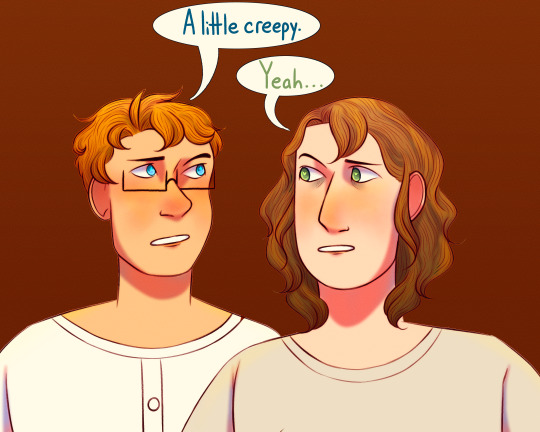

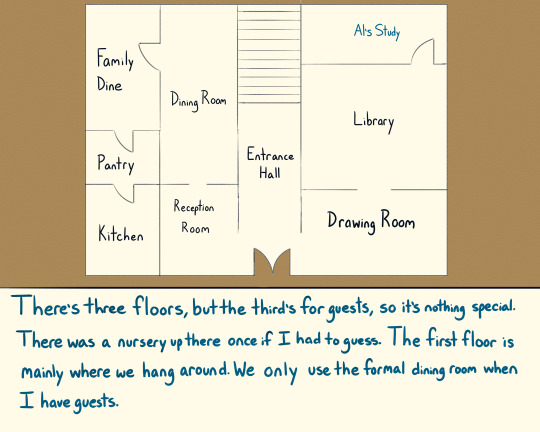

Tolys: I'm used to sharing a space anyway, so I didn't mind when I moved in! It's convenient for everyone I suppose.
**Historical Note: Alfred has kept this home since the 1840s-1850s, a little before Molly came to the United States again. He did this because of the upheaval at the time near Washington D.C. and the personal convenience of living in New York. If D.C. is America's head, New York City is its heart after all.
There were a variety of architectural styles becoming popular at this time such as Italianate, Neoclassical, Georgian Revival, Beaux-Arts, and Gothic Revival. Many of the large homes built in New York City by the newly wealthy around this period were in the Beaux-Arts and Georgian Revival styles. I picture Alfred's home being in the Georgian Revival style like the Carnegie Mansion or the Willard D. Straight House.
Alfred's home is certainly downsized from the scale of these mansions, but has many of the rooms typical of an upper-class home of the late 19th-early 20th century. These homes were typically three to four floors, with the first floor being for entertaining company and for leisure. The reception room was for receiving guests and leaving calling cards if the homeowner was not available, while the drawing room was for entertaining guests or for the family to relax in. It was also typical for these homes to have a small-scale dining room for less formal family meals such as breakfast and a more formal dining room for entertaining guests in the evening. This smaller scale dining area was also typically where children ate when these evening events were held, and they were usually not permitted at the formal table until they reached their late teens.
Floors for guests to sleep and for the family were often separated, and in many cases the children slept on a separate floor from the adults. In very wealthy homes, there was usually a floor or space reserved for servants' quarters and passages for staff to move around the house in without being seen. In upper-class households, the husband and wife often had separate but connected rooms. This wasn't necessarily out of personal modesty, but more for the modesty of the servants who might be helping them dress. Here, Alfred and Tolys use it more for convenience. In lower-class households, it was still perfectly common and acceptable for a couple to share a room and bed.
There's certainly more that could be said about the layout of these homes, and I based these floor plans off of several historic homes I've visited and floor plans I researched online. Therefore, if there are inaccuracies or if there's anything I overlooked, my apologies!
#hetalia#ask#historical hetalia#hws america#hws lithuania#hws romano#hws ireland#nyo!ireland#ameliet#iremano#aph america#aph lithuania#aph romano#aph ireland#hetalia ask blog#and they were roommates... oh my god they were roommates
68 notes
·
View notes
Text


344. Antichrist Rise to Power - Departure Chandelier (Black Metal, 2019)
Art by Jean-Baptiste Mauzaisse: "Napoléon Ier sur son lit de mort, une heure avant son ensevelissement"(Napoléon on his deathbed, one hour before being shrouded), mid 19th century.
"Mauzaisse came from a modest background. His father was the organist at Corbeil Cathedral, and could not afford to pay for Jean-Baptiste's studies. At the age of nineteen, he left home and was able to find a position in the studios of François-André Vincent, at the École des Beaux-Arts in Paris."
#metal#black metal#art#artwork#music#painting#drawing#illustration#heavy music#artist#cover art#heavy#jean baptiste mauzaisse#french#french painter#canada#usa#napoleon#history#oil painting#19th century
21 notes
·
View notes
Text
The secret, part 2
Hey, I'm back!
Sorry about last week, but I was very, very sick? Very bad attack of flemmingite aigue!
Translated in English, I was feeling lazy as f*ck, so I just watched Youtuvideos. I'm sure you know how it goes. Feeling better now, but still have little to show to show for it.
Speaking of lazyness...


I know I waxed lyrical about food and markets and all that jazz, but one can't really live on the local production.
One can only do so much with fish, after all.
So we have Supermarchés Lapompe. Not Walmart, but the small chain (2 markets) does brsk business with both locals and tourits in both basic nececities... and about a ton of of junk food, let's be honest here. And that's the dirty little secret we're don't really like to talk about.
The Lapompe family also deal in fuel, gas, and electricity proction and storage. Their home lot is shaping to be something else!
I didn't upload that one because it's a very basic one, sure y'all can do just as well.


Otherwise, I had a CAS moment. I know, weird.
I made that quite big appartent building nect to the market last time, and the inhabitant just came to life in my head. Happens sometimes.
So, meet the Boucicaud family:

Bernard Boucicaud.
He is the reason the famijy is here, since the building they're residing in belonged to his grandparents. Bernard was born here,tail ending the boomer generation, but he grew up in Paris, since his parent hightailed out of Vogoel to make careers and a life as far away from anything fishy as possible.
Bernard had very nice vacation in his grandmother house as a boy.
However, as his parent fled Vogoel, Bernard fled Paris to traval the world, because he was an artist.
In Delhi, he met

Lucie
Then Dolman, now Boucicaud. Same kind of story except she's from Marseille.
They both liked to travel, so they did, Bernard managing some free-lance photographing to earn a little money and Lucy learning Yoga and stuff.
Both probably smoking funny stuf.
But time flies, and a baby girl was bord... and there is one day when you long for a nice bed and some creature comfort, so they came back to France.
Infortunately, neither were talented enough as artist to "make it" in the capital. So Bernard remembered his Mémé house, which his parent didn't really use and were quite happy to get rid of. It provide a far more luxurious accomodation than what they could afford in Paris, and it's would be a far better place for their girl to grow up in.

And here is said girl, Namaste Boucicaud.
Let's make it clear, not a happy bunny.
First, why did those idiot boomer parents she's saddled with had to name her Namaste? She hates it! honestly, Grertrude would be nicer!
And OMG the parents! Couldn't they be, I don't know, a little bit NORMAL once in a while? (well, they're both Avant Garde, so the teen may have a point here)
At least her father had some job with the local paper, so Namaste could forget the cheesy seagull photos to sell to tourists... and the paintings.
And her mother, still dressing like she was young, in jeans and exotic tops!
Honestly, Namaste can't wait to get her Bacalaureat and flee to Paris to her grand parents who are normal people and call her Nathalie.
"Where you will go to the Beaux Arts, dear. Not of that nonsense about being an accoundtant like your grandfather, do you hear me? Open your chakras, honey..."
But MOOOOMM!!!
17 notes
·
View notes
Note
Hi!
As Archi anon I feel like you shouldn’t have given me free reign to yap about my interests but here’s my comprehensive guide to How It Works (its a bit of a long one)
So in the fic Max is going to uni which rules out the 'academie des beaux arts' track which is a whole other curriculum. Generally architecture as a study all cover the same things but in different ways so you end up having the main material:
Design - this is the bane of everyone’s existence, usually an open studio session lasting around five hours. This is the class where everything major happens, as in you start designing buildings, drawing plans, and building models.
History - very self explanatory, usually covering art and architecture from ancient times up until present day (these courses tend to be lecture based and have a typical exam format as other majors)
Physics - in short, the building needs to stand up (covers statics, mechanics and structural systems, basically the physics in beams, columns and slabs)
Construction - when you think of architecture this is probably it, covers very technical details and how to draw them architecturally (goes into the nitty gritty details of anything from waterproofing a roof and insulating a basement to the standard dimensions of a door hinge and how to plaster a wall)
These courses of course span over a bunch of years so you end up with classes called History I, History II… but generally this is what gets covered.
Then you have electives which you can choose related to your field (urban planning/ sustainable architecture) or anything else the university offers.
In terms of The Vibes, people in design majors tend to become really close by virtue of having the same major courses so its more like a high school vibe than uni where you see someone once in a course and then never again. The studio space also plays a role in this cuz you spend the majority of your time there so you get to see what everyone else is doing as well. (I usually like to work on my projects at home, just beware that you end up finding cardboard and foam in places they really shouldn’t be and you stare at it wondering how on earth it managed to get there)
Anyway if there are any archi or design majors lurking on this blog feel free to add? Im going off of personal experience for most of these so it by no means speaks for everyone.
Hope this helps!
Archi anon
archi anon did you know I love you.
tysm 😭 you are an actual lifesaver. I will try to do your major justice I promise
13 notes
·
View notes